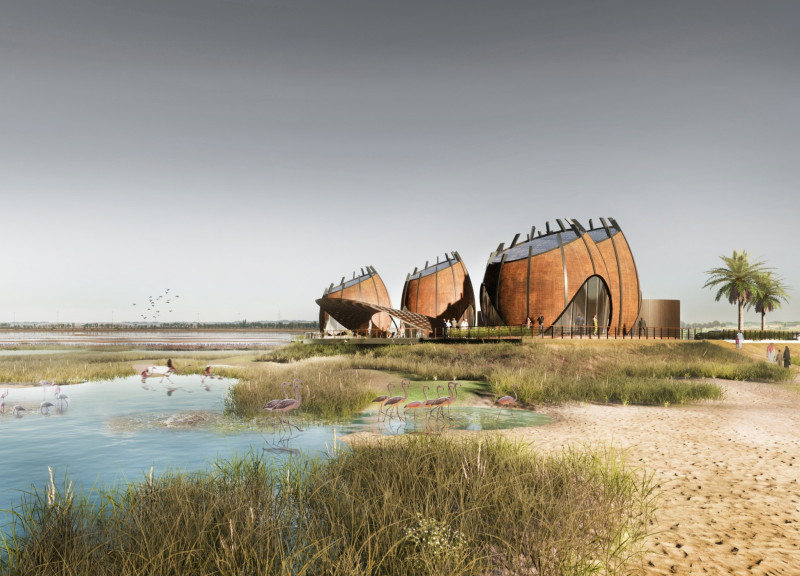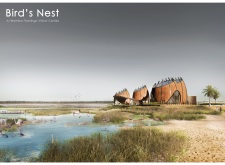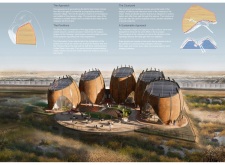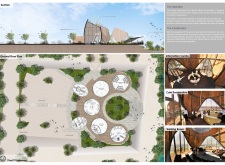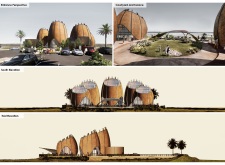5 key facts about this project
The Bird's Nest Visitor Center is located at Al Wathba Flamingo Park, a place known for its diverse wildlife and unique wetlands. It is designed to serve as an educational and recreational space for visitors. The center consists of five egg-shaped pavilions arranged around a central courtyard. This arrangement encourages movement and interaction while drawing on the essence of the flamingo's natural habitat. The design reflects the forms found in nature, ensuring an experience that connects visitors to the surrounding ecosystem.
Design Inspiration and Layout
The shape of the pavilions mimics that of eggs, presenting a gentle and inviting aesthetic. The central courtyard acts as the heart of the center, providing wide views of the wetlands. This space promotes a sense of community, as it allows visitors to gather and share experiences. Key facilities such as the Information Centre, Display Hall, Training Hall, Gift Shop, and Coffee Shop are easily accessible, allowing smooth navigation through the center.
Sustainability Features
Sustainability is a key aspect of the design. The pavilions are arranged to take advantage of natural ventilation, which helps keep the indoor spaces comfortable. Openings are strategically placed to promote airflow, reducing the heat from the sun. Solar panels on the roofs collect energy, and rainwater along with HVAC discharge is reused for landscaping, aligning with environmental principles.
Construction and Materials
The construction approach focuses on prefabrication, which allows for efficient assembly and reduces disruption on-site. The structure is built with a steel framework, utilizing wooden-clad insulated panels and aluminum curtain walls. These materials have been chosen for their durability and performance. Together, they help create a lasting structure that fits into the natural landscape.
The design effectively blends the pavilions into the wetlands, where each building serves a functional role while enhancing the appreciation of the area. The orientation creates clear lines of sight, inviting visitors to engage with the habitat and experience the thoughtful planning behind the structure.


